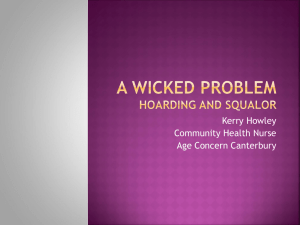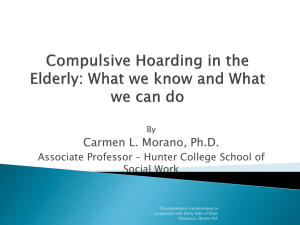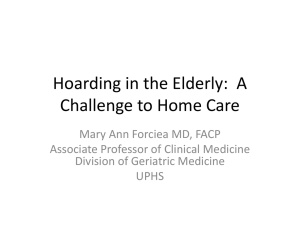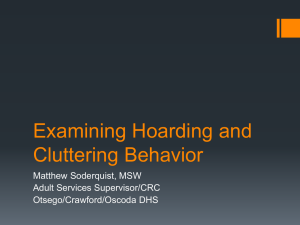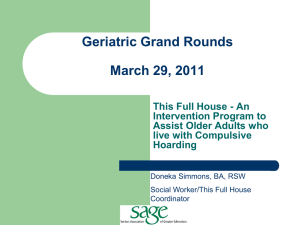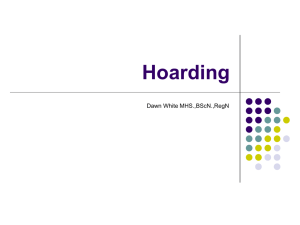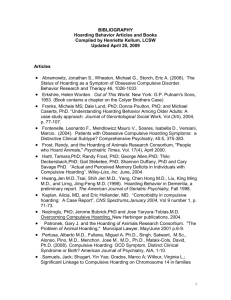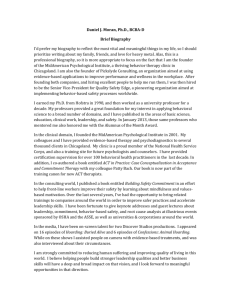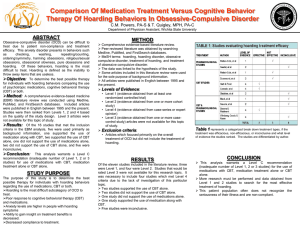Blurb about the Buried in Treasures program What is Hoarding
advertisement
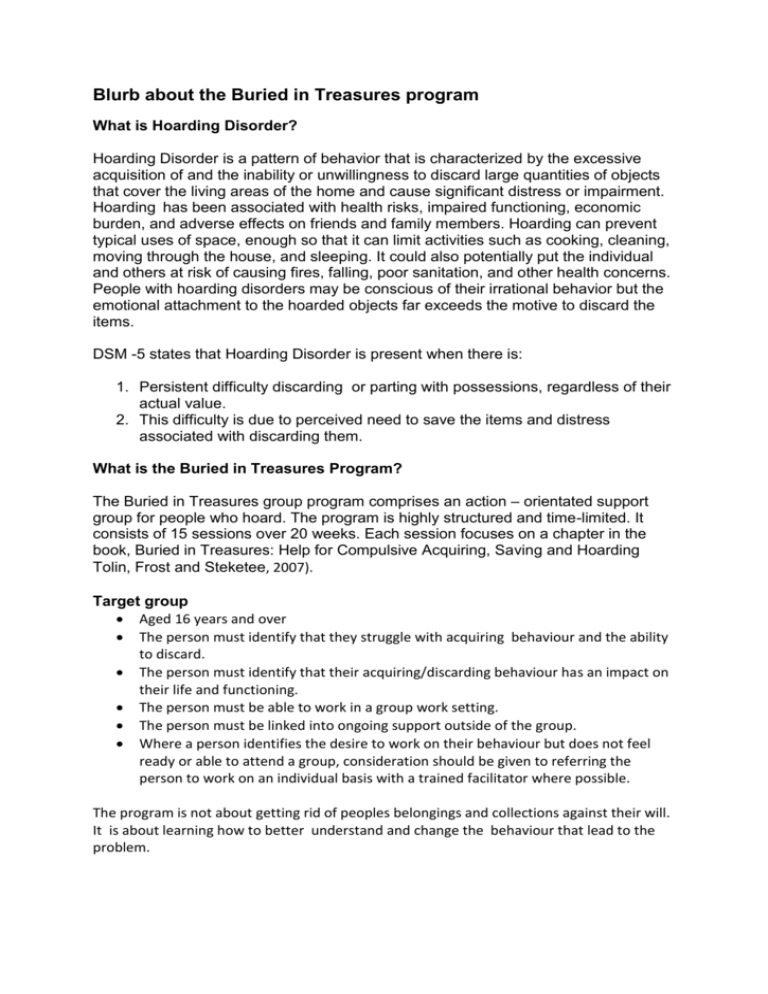
Blurb about the Buried in Treasures program What is Hoarding Disorder? Hoarding Disorder is a pattern of behavior that is characterized by the excessive acquisition of and the inability or unwillingness to discard large quantities of objects that cover the living areas of the home and cause significant distress or impairment. Hoarding has been associated with health risks, impaired functioning, economic burden, and adverse effects on friends and family members. Hoarding can prevent typical uses of space, enough so that it can limit activities such as cooking, cleaning, moving through the house, and sleeping. It could also potentially put the individual and others at risk of causing fires, falling, poor sanitation, and other health concerns. People with hoarding disorders may be conscious of their irrational behavior but the emotional attachment to the hoarded objects far exceeds the motive to discard the items. DSM -5 states that Hoarding Disorder is present when there is: 1. Persistent difficulty discarding or parting with possessions, regardless of their actual value. 2. This difficulty is due to perceived need to save the items and distress associated with discarding them. What is the Buried in Treasures Program? The Buried in Treasures group program comprises an action – orientated support group for people who hoard. The program is highly structured and time-limited. It consists of 15 sessions over 20 weeks. Each session focuses on a chapter in the book, Buried in Treasures: Help for Compulsive Acquiring, Saving and Hoarding Tolin, Frost and Steketee, 2007). Target group Aged 16 years and over The person must identify that they struggle with acquiring behaviour and the ability to discard. The person must identify that their acquiring/discarding behaviour has an impact on their life and functioning. The person must be able to work in a group work setting. The person must be linked into ongoing support outside of the group. Where a person identifies the desire to work on their behaviour but does not feel ready or able to attend a group, consideration should be given to referring the person to work on an individual basis with a trained facilitator where possible. The program is not about getting rid of peoples belongings and collections against their will. It is about learning how to better understand and change the behaviour that lead to the problem. The goals of the program for the participant: 1. 2. 3. 4. 5. 6. Increase your understanding of compulsive hoarding. Create living space. Increase your ability to use your living space the way you want. Organise your possessions to make them more accessible. Improve your decision-making skills. Reduce your compulsive buying or acquiring and replace it with other pleasurable activities. 7. Evaluate the way you think about possessions. 8. Reduce clutter. 9. Learn more effective problem solving skills. 10. Prevent future hoarding. The process for referral is: 1. Complete referral form above 2. Return to Merilyn Duff at: buriedintreasures@each.com.au 3. Follow up interview of the person referred with take place by BIT Coordinator or facilitator 4. Acceptance into the group if appropriate.
